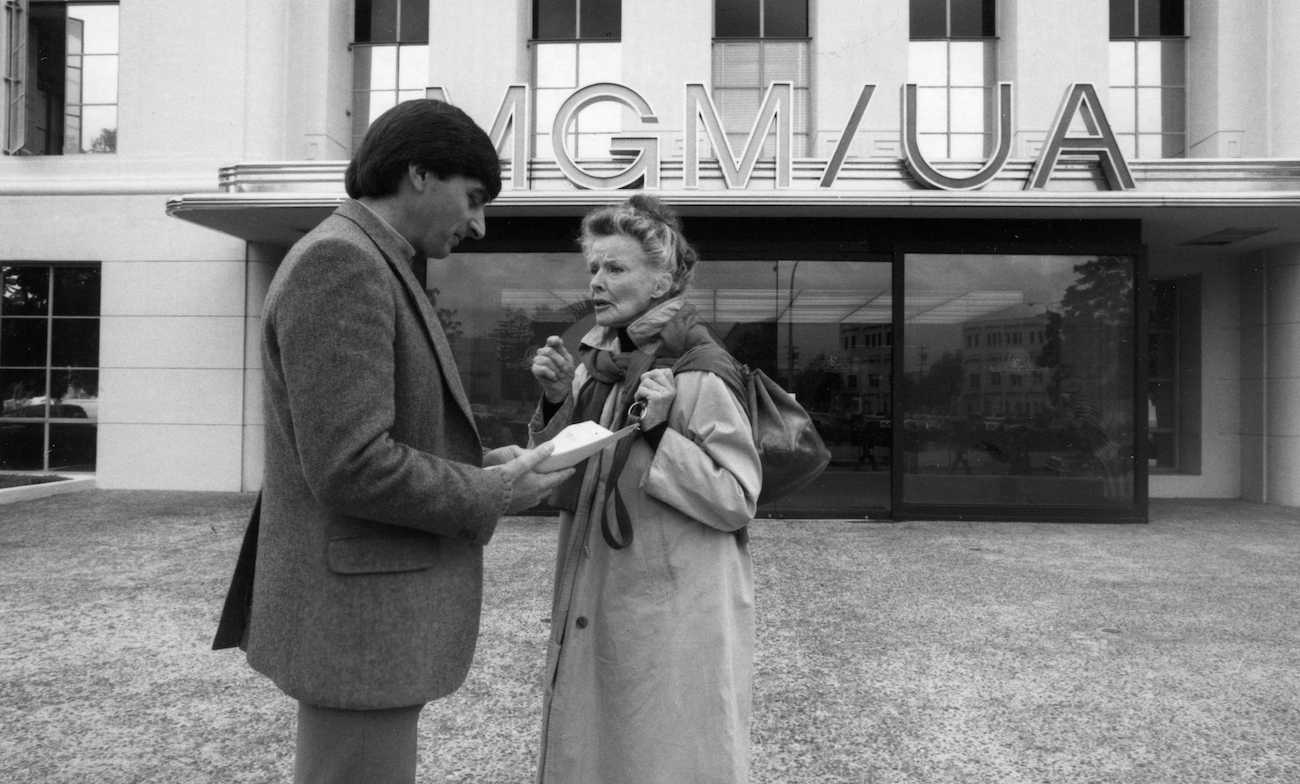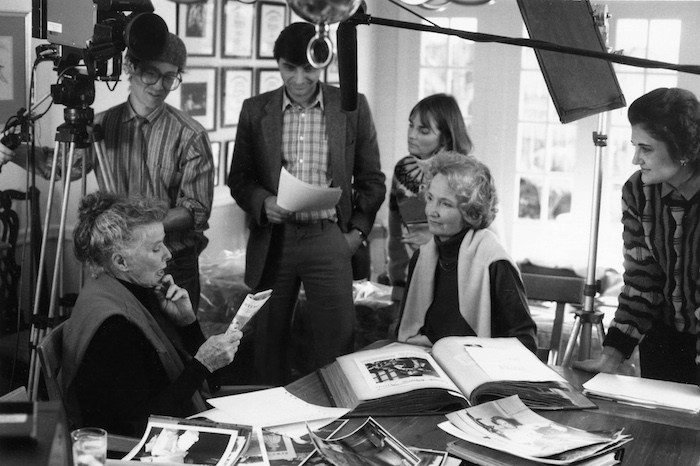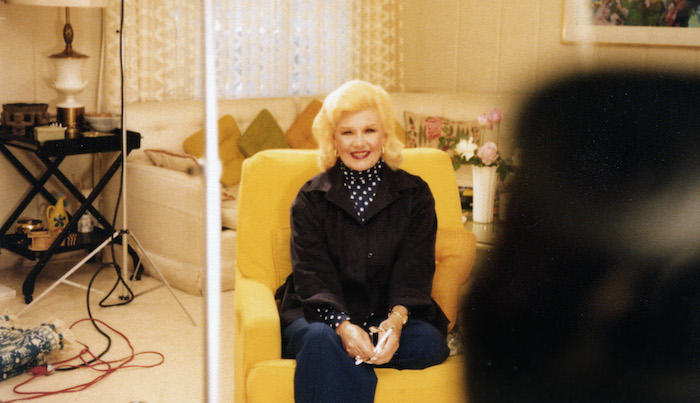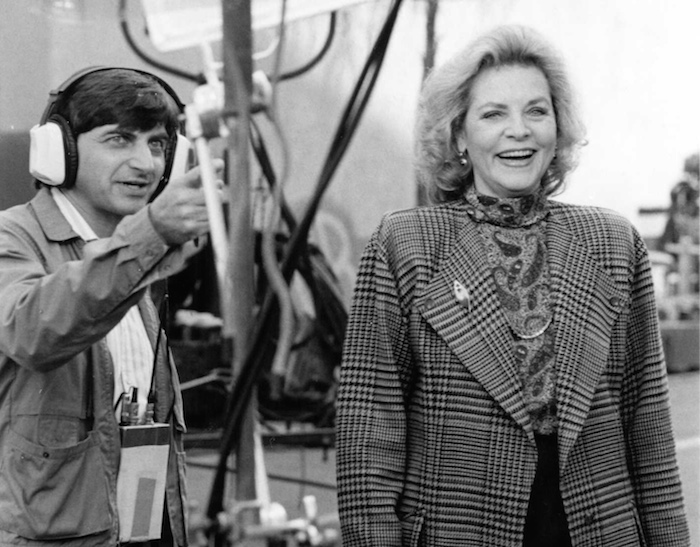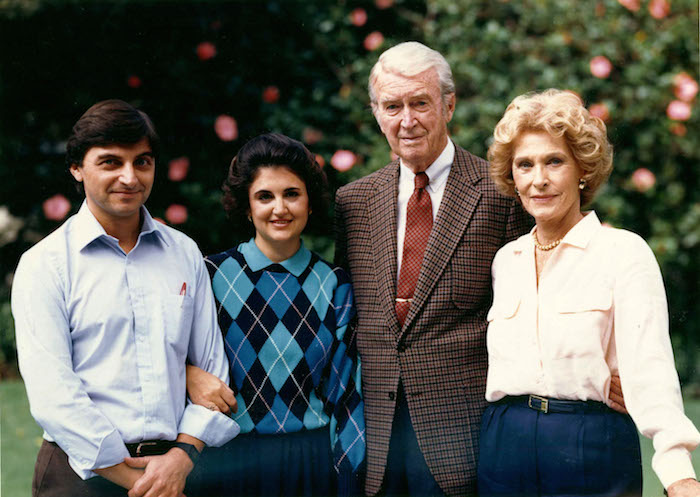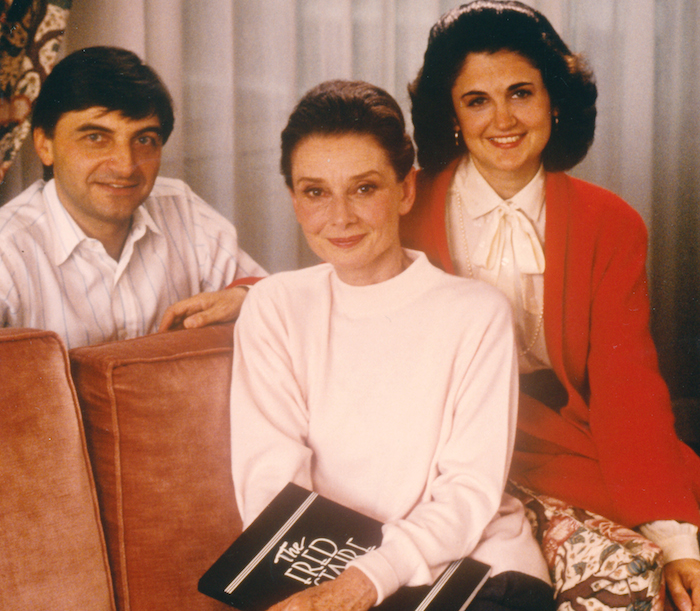Today marks the 108th anniversary of Katharine Hepburn’s birth. Born on May 12, 1907, Hepburn was a major force in Hollywood for more than six decades and was nominated for 12 Academy Awards. She won four — more than any other performer in history. Hepburn was also notoriously private and independent. She rarely did interviews so it was a major coup when documentary filmmakers Joan Kramer and David Heeley persuaded her to be the subject of one of their profiles of movie legends. Hepburn so trusted the filmmakers following the release of Starring Katharine Hepburn (1981) that she asked them to collaborate with her on another documentary about her frequent co-star and long-time partner, Spencer Tracy. Until that time, Hepburn had never publicly commented on her relationship with Tracy. The resulting film, The Spencer Tracy Legacy: A Tribute by Katharine Hepburn, won two Emmys and led to a third collaboration between Hepburn, Kramer, and Heeley. Katharine Hepburn: All About Me (1993) was a riveting portrait of the star.
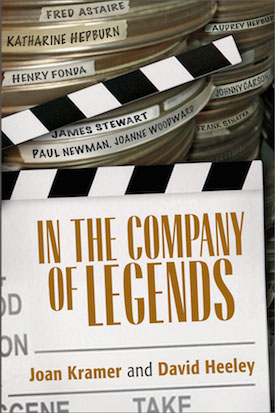 In their wonderful new book, In the Company of Legends, just published by Beaufort Books, Joan Kramer and David Heeley provide a delicious behind-the-scenes view of Hollywood that is full of one-of-a-kind anecdotes about the legendary performers they got to know during the making of their documentaries. In addition to Katharine Hepburn, there are stories about working with Frank Sinatra, Audrey Hepburn, James Stewart, Lauren Bacall, Elizabeth Taylor, Jane Fonda, Johnny Carson, Joanne Woodward, Ronald Reagan, Bette Davis, and many others.
In their wonderful new book, In the Company of Legends, just published by Beaufort Books, Joan Kramer and David Heeley provide a delicious behind-the-scenes view of Hollywood that is full of one-of-a-kind anecdotes about the legendary performers they got to know during the making of their documentaries. In addition to Katharine Hepburn, there are stories about working with Frank Sinatra, Audrey Hepburn, James Stewart, Lauren Bacall, Elizabeth Taylor, Jane Fonda, Johnny Carson, Joanne Woodward, Ronald Reagan, Bette Davis, and many others.
“Thank you, David Heeley and Joan Kramer for giving us one of the best reasons ever for curling up with a book,” said Turner Classic Movies host Robert Osborne shortly before TCM aired five of their documentaries last month. “After their treating us to some of the best, most literate and entertaining hours of television (including Bacall on Bogart, The John Garfield Story, The Adventures of Errol Flynn, and numerous other TV specials), they now offer us a book I never wanted to end, chock full of constant surprises. In The Company Of Legends is a king’s ransom of fascinating stories about colorful, bigger than life people we know but don’t know. The big bonus is that it’s a book about dazzling personalities told by people who actually knew the celebrities they write about, worked with them and, further, socialized with them, aware of their foibles and strengths from first-hand knowledge, not hearsay. That’s something both rare and refreshing in books today. This one deserves a high spot on your ‘must read’ booklist for the year.”
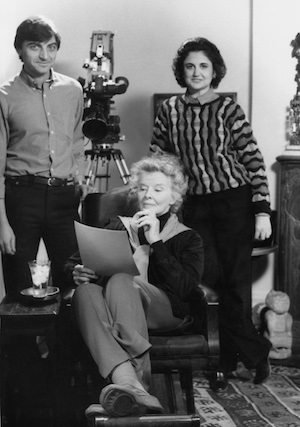 Danny Miller: As a lifelong classic movie lover, I remember watching your great documentaries when they first aired and being amazed that you got people like Katharine Hepburn to open up in ways that she’d never done before publicly. She seemed like quite a formidable character and someone who could be a little intimidating. Were you ever intimidated by her when you were working together?
Danny Miller: As a lifelong classic movie lover, I remember watching your great documentaries when they first aired and being amazed that you got people like Katharine Hepburn to open up in ways that she’d never done before publicly. She seemed like quite a formidable character and someone who could be a little intimidating. Were you ever intimidated by her when you were working together?
David Heeley: That’s a good question. You never wanted to casually enter into discussion with Kate. As you say, she could be intimidating. I don’t think she was trying to be but you knew you always had to be on your toes — she definitely didn’t suffer fools gladly! So you just made sure you were prepared. If you were going to a script meeting, you better have your act together and be able to justify anything you had in the script because she would ask you a lot of questions.
Joan Kramer: On the other hand, Danny, if you gave her the impression that you were intimidated, she was so intuitive that she could pick that up in a minute and then she’d walk all over you! She definitely preferred people who were not meek and who knew what they were doing.
David: She wanted to work with strong people that she trusted. Gaining Katharine Hepburn’s trust and respect is probably the highest compliment Joan and I ever had.
I love that you also include stories in the book about when things got a little heated with Hepburn and you had disagreements. And I was cringing when you wrote about that less-than-flattering article about her that appeared in Dial magazine shortly before the first documentary aired. Even though you two had nothing to do with that article, it made it look like your film was going to be a hatchet job.
And that was the very beginning of our relationship — it wasn’t as if she knew and trusted us at that point. We were very worried about it because the magazine was published by the same company that was producing the show so it looked like we were all in bed together.
Joan: We were horrified. Some of the people who had done interviews for us were much more concerned than she was. They wanted us to take them out of the show, they didn’t want to be associated with it. Of course everything worked out fine in the end.
David: Thanks to Kate who was very supportive of us. She said, “I know it’s not your fault. Look, I’m used to this, these things happen all the time when you’re in the public eye. Don’t worry about it!”
Wow, that could have ended very differently if she wasn’t as smart as she was or if she was all ego.
Joan: Well, there sure wouldn’t be this book filled with stories about her!
I was touched to read about all the people who knew her who participated in the shows, even some with whom she was not on the best of terms. I knew about Hepburn’s break with Garson Kanin after he wrote that book about her and Spencer Tracy years earlier, but I didn’t realize that there was a softening between them as a result of your special.
David: Danny, the two reconciliations that we achieved during the making of that show is one of the things about those years that pleases me the most when I think about it today.
Who else besides Hepburn and Kanin?
Joe Mankiewicz. Even though he had produced her comeback film, The Philadelphia Story, as well as Woman of the Year, her first film with Spencer Tracy, they had had a falling out during the making of Suddenly Last Summer which he had directed in 1959. Kate felt that Mankiewicz had been cruel to Montgomery Clift, who was still recovering from a bad car accident, during the making of that film. At the end of the filming she had actually spat in his face and they hadn’t spoken since.
Joan: When we contacted him, Mankiewicz asked me several times if Hepburn knew and approved of him being in in the documentary. When he arrived for the interview, he said, “I’m so happy that Kate wants me to be a part of this show.” There were tears rolling down his cheeks.
Wow. One of my favorite moments in your book is when you talk about the day you were shooting some interviews at MGM and Hepburn barreled into what used to be L.B. Mayer’s office in the Thalberg Building (to the utter shock and surprise of MGM’s current president):
She started to reminisce. “I remember the four of us sitting around this table. Greta” — (I realized she had to be talking about Greta Garbo) — “sat there; I sat here; George Cukor sat next to me; and L.B. sat at that end. We were trying to sell him on the idea of letting Greta and me star in Mourning Becomes Electra, which George would direct. Well, we didn’t get very far. We could tell right away that we were not heating up the room. So George nodded to me and Greta, and we got up and left. That was the end of that idea.” Katharine Hepburn and Greta Garbo in a movie together? Not the only time a studio head would miss a golden opportunity.
I know with some of your subjects, you had to do a fair amount of finessing to get them to agree to participate. Did you plan any specific tactics beforehand or just rely on your instincts?
David: Sometimes we decided on a tactic, but very often it was instinct. When we were doing our first show on Fred Astaire, we knew we had to have Ginger Rogers, but she was fed up with talking about Fred. We had to find a way to convince her that it was in her best interest to be on the show. We told her that we didn’t want her to come on and say how wonderful Fred was, we just wanted to hear about her experiences and what it was like for her to do those amazing dances. We promised to make her the center of the interview and she agreed. Of course, when you mix that in with everything else, it becomes a complete portrait of Fred!
It’s interesting that at that point in her life she was still worried about being overshadowed by him. She did so much great work on her own.
Joan: Yes, I agree that her own body of work was quite impressive but you still can’t hear the name Ginger Rogers without your next thought being Fred Astaire!
It’s true. I guess she knew that his name would be mentioned in the first line of her obituary no matter what she did! I’m so grateful that you were able to get so many of these greats to sit down in front of your cameras. Was it ever a hard sell to get these shows off the ground?
Most of the people we did were still alive and they were still revered by the public. And for the ones who were not alive, such as Humphrey Bogart, we got Lauren Bacall to host a show about him for the first time.
She’s another one, like Katharine Hepburn, that I always heard could be a little prickly. How was it working with her?
David: There may have been a few times when we felt like we were walking on eggshells, but even on the roughest days of the shoot, if you look at the material that came of that, you wouldn’t have a clue. She was the ultimate professional and she delivered beautifully. We ended up great friends. I think she had a kind of protective layer she put up but underneath that was really quite a wonderful woman.
Joan: I think, to a degree, she was in the same category as Ginger Rogers. You can’t say Lauren Bacall without everyone immediately thinking of Bogey.
Even though, like Ginger, she was certainly a great actress in her own right.
And a really great person when you got past that protective layer!
David: One of the reasons that she agreed to do the show on Bogart with us was because of her friendship with Kate Hepburn. We had just done the show about Tracy so she knew we could deliver and that she could trust us to handle the subject well.
Did you ever try to do shows about people who were less known than the huge stars?
Joan: I don’t think we talked about it in the book, but I always wanted to do a show on the actors who were the second bananas — people like Sydney Greenstreet and Peter Lorre. I loved those character actors but no one would have paid for a show like that.
It makes me crazy today when I meet people, even some in the movie industry, who have no idea who the gigantic stars of yesteryear are. “Who’s Clark Gable? Greta who?”
Oh, listen, when we did our show about Universal, I talked to people who were at the studio who had no idea who Carl Laemmle was.
Did you ever have people say things in your interviews that you were worried about using because it was salacious or controversial?
Well, when we did the show about the Group Theater, Joanne Woodward did all the interviews and she was talking to Sylvia Sidney who on camera said that the reason the Group Theater broke apart in 1941 was that everyone started sleeping with everyone else! When David said, “Cut!” after that sequence, Joanne ran over and asked us if we could use that. But of course we kept it in!
It was also fascinating to read about the people who seemed very shy or like they had nothing to say about their lives and careers but who then came alive as soon as the cameras started rolling.
David: Yes, Jimmy Stewart and Henry Fonda were two big examples of that. It’s a show business phenomenon, I think, but quite stunning when it’s happening in front of your eyes. After we first met Jimmy Stewart, I remember saying, “Joan, I’m worried about this show! We promised PBS two hours and he’s supposed to anchor the entire program and I don’t think he can do it.”
Joan: And then once we were rolling, he was great! Fonda also seemed to have nothing to say in response to David’s questions before the cameras rolled. We were sweating bullets but again, he turned out great, too. It was interesting to discover that all of these idols were just human beings.
And then there were the people you came close to getting but didn’t like Cary Grant, Gene Kelly, Rita Hayworth, and others.
David: It was only when we started writing that last chapter in the book that we started thinking, “Oh my goodness, why couldn’t we get those people? We were so close with some of them and then they just slipped away for one reason or another. But you can’t succeed all the time!
And now they’re all gone. As a classic movie lover, I wish you had been able to talk to all of those people — I think your work is so important for future generations.
Joan: I was delighted to talk to young people about this book recently who still seem very interested in these people, I wasn’t sure they would be. These amazing stars weren’t always appreciated. I used to work on “The Dick Cavett Show” and he’s still a great friend. Dick recently asked me why I never had Irene Dunne on the show. I said, “Dick, I still have her phone number in my list of contacts, but no one back then would let me book Irene Dunne!”
What? Because they thought people wouldn’t be interested in her?
Yes. I heard at the time, “Nobody will know who Irene Dunne is.”
Ugh!
David: And when we talked to some of the commercial networks we’d get comments like, “Who knows who Spencer Tracy or Katharine Hepburn are anymore?”
Dear God. If I was in a meeting with some executive today who said that, I’d just hope that I wasn’t armed at the time!
Click here to order In the Company of Legends by Joan Kramer and David Heeley, with a Foreword by Richard Dreyfuss.

